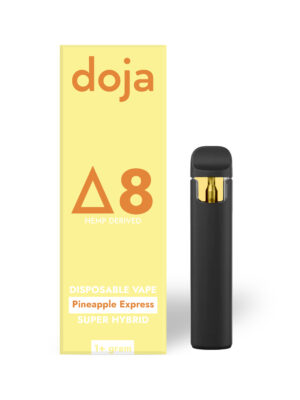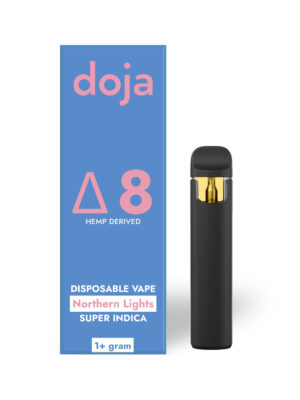Tetrahydro cannabinoid or THC is found in cannabis plants like marijuana and hemp. It is a psychoactive substance that has medical and recreational uses.
THC is a natural drug, but it can also be produced synthetically in medical laboratories. It has varying potency. Depending on the type of THC, it can range from 0 to 90%.
Knowing the THC levels in marijuana products is essential for both recreational and medical use. The THC determines the potency of a product.
During early studies, the natural amount of THC found in Marijuana is only about 4-5%.
It is mainly inaccurate since the process of testing then was not as sophisticated as now—the method of storing and testing the cannabis samples did not protect them from degradation.
But even so, THC in Marijuana today is much higher. Cannabis breeders and cultivators are constantly experimenting with creating better strains.
Since recreational marijuana is slowly being accepted and legalized, farmers want to get the most THC out of their harvest. Plant with higher potency will sell more in the market.
The highest-selling cannabis strain is called the Godfather OG. It is a variety of Marijuana that has at least 34% THC content. Because of this, it is a favorite choice among cannabis users.
Common cannabis plants have 20% THC or higher. Cannabis products usually have 70% to over 90% THC. The amount depends on the brand and type of product.
Here is a table showing the THC content of standard marijuana products.
| Product | THC Content |
| Gummies | 20-25 mg |
| Tinctures | 0.3% |
| Cannabis or Weed Extracts | 99% |
| Flowers | 15% or higher |
| Hash oil | 12% |
| CBD oil | 0.3% |
Contents
What parts of cannabis plants have THC?
Not all parts of cannabis have THC content. Although, most of them have substances valued for their therapeutic effects.
THC commonly exists in the leaves and flowers of marijuana and hemp. These parts are what are used to produce products with psychoactive properties.
Is THC the same as THCA?
Cannabis products come with content labels, much like the ingredient label in commercialized food. If you have ever bothered to look at it, you might have noticed THC and THCA.
What is THCA, you ask. It’s a precursor to THC. It stands for tetrahydrocannabinol acid.
Cannabinoids are produced in cannabis plants in acid forms. These acids have different chemical properties from their non-acidic counterparts.
When heated, THCA converts to TCH. The process is known as decarboxylation. It happens over time in the plant structure, but not all THCA is converted to THC. So, the cannabis plant has both THCA and THC content.
Smoking raw cannabis flowers and leaves also trigger the conversion of THCA to THC.
But there is less THC in natural cannabis products than in commercialized ones. Extraction allows manufacturers to put higher THC concentrate on weed products.
You can also observe in the product label that the THC is always higher than the THCA. TCH is the primary substance that gives the desired psychoactive effects. The amount of THC determines the potency of a product.
How to do measure THC?
The amount of THCA that turns to THC is not always accurate. Sometimes, manufacturers get different amounts after decarboxylation.
The reason for this is THC is very sensitive. Exposure to air can degrade it immediately and turn it for cannabinol.
The amount of the resulting substance is very much affected by the protocols observed during processing. Based on studies, about 75% or less of the THCA will convert to THC after decarboxylation.
A typical formula is used to calculate the amount of THC in raw cannabis. It looks like this:
(0.75 x 0.887 x percentage of THCA) + percentage of THC = active and consumable THC content.
Let’s try it out. Suppose the product label indicates that THC is 20% and THCA is 1%. If we substitute it to the equation and compute, it will become:
(0.75 x 0.887 x 1%) + 20% = 14.155% active and consumable THC content
What kinds of THC is in Marijuana?
THC is sometimes used in place of Delta 9 THC. But THC is broader.
Different kinds of THC exist in the marijuana plant. These substances have similar chemical properties but slightly different molecular structures. They are called THC chemical analogs or structural analogs.
Their minor differences are seemingly insignificant. But they have a significant impact on their effects.
Delta 9 THC
Delta 9 THC is the most abundant THC in Marijuana and other cannabis plants. It is also the most potent.
The numbers in Delta drugs indicate the location of their chemical bond. Delta 9 has a double bond on the 9th carbon atom.
When Delta 9 enters the body, it reacts with the CB1 Receptors in the Central Nervous System. When CB1 is activated in the brain, it gets the person high. The THC triggers the release of dopamine that creates a euphoric feeling.
Delta 9 can be used as:
- Analgesic
- Antiemetic
- Antitumor
- Antispasmodic
- Antianxiety
- neuroprotective properties
Delta 8 THC and other lesser cannabinoids
Aside from Delta 9, over a hundred cannabinoids are found in cannabis. Among lesser cannabis, the most popular are Delta 8, 10, and 7.
These cannabinoids rose to fame after the passage of the Farm Bill in 2018. The law legalized the hemp plant’s use, sale, and manufacture, hemp derivatives, and hemp products.
But in contrast to Delta 9, there are fewer amounts of Delta 8, 7, and 10 in Marijuana. Because of these, manufacturers found a way to convert CBD into Delta drugs.
The process strikes up a legal debate on whether the final product is a natural or artificial drug.
And there is also the issue of whether these drugs are safe or not. Delta 8, 7, and 10 products do not have the approval of the Food and Drug Authority.
Still, many users now prefer these lesser cannabinoids because they are milder. They result in a mellow high that still enables a person to be functional.
Delta 8 and 10 can be used for similar medical purposes as Delta 9. But they have fewer side effects.
Users report that Delta 8 is better for relaxation, while Delta 10 is more energizing.
Tetrahydrocannabivarin or THCV
Like Delta 9, THCV also exists abundantly in Marijuana. But not many know about it.
It is also a product of decarboxylation of THCA. Unlike Delta 9, it only has a 3-side alkyl chain, which does not bind as strongly to CB1 receptors.
Although it is taken in high doses, THCV can cause the same psychoactive effects as that of Delta 9.
Experimental medical research sees THCV as a potential treatment for type 2 diabetes. But it would take years before they can make a breakthrough.
Tetrahydrocannabiorcol or THCC
THCC is an analog of THC, but it is more similar to cannabidiol or CBD.
CBD is a primary component of cannabis that has psychoactive properties.
THCC is the same. It does not bind with CB1 and CB2 receptors. So it does get users high.
Although it is an excellent pain reliever, THC binds with vanilloid receptors which are responsible for regulating pain, temperature, and nerve signals.
Tetrahydrocannabiphorol or THCP
THCP was just recently discovered in 2019. It is relatively new in the market, and there are limited studies.
Initial research suggests that it has two extra carbon atoms making it more potent. The longer the chain, the stronger its bonding capability with CB receptors in the body.
THCP is said to be 33 times more potent than Delta 9. The possibilities for THCP in the medical field are staggering.
What determines the amount of THC in marijuana plants?
The THC content of Marijuana is affected by three main factors:
Genetics
Cannabis plants have a variety of strains that is determined by breeding. Each strain has a unique genotype which is a genetic blueprint. It determines the physical and chemical characteristics of the plant.
There are three marijuana strains: Indica, Sativa, and hybrid. Basically, the Indica strain has more relaxing. Sativa is more energizing. And hybrid is a combination of the two.
Here are some of the popular marijuana strains available in the market:
| Maui Wowie | Pineapple Express | Super Silver Haze |
| White Widow | Afghan Kush | Northern Lights |
| Golden Goat | Bubba Kush | Purple Kush |
| Los Angeles Confidential | Fruity Pebbles OG | Blue Dream |
| Sour Diesel | Acapulco Gold | Granddaddy Purple |
Enzymes
The presence of other enzymes in a marijuana plant can affect the ratio of CBD to THC. The greater the number of different enzymes are, the lower the THC content.
Environment
Initial studies reported that environmental factors like weather and soil quality affect the THC level of a grown marijuana plant. But recent research is slowly disproving that. Although the environment is still believed to affect the amount of THC, its impact is lesser than initially thought of.
If marijuana plants grow in poor environmental conditions, they will prioritize their survival first rather than making THC.
Environmental factors include:
- Humidity
- Temperature
- CO2 levels
- pH levels
- source, type, and quality of light
- nutrients available
- soil quality or water quality for hydroponic
- outdoor or indoor environment



